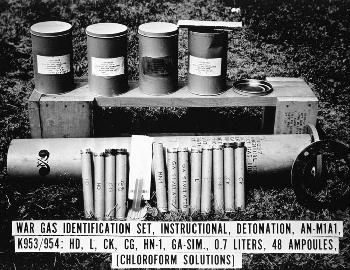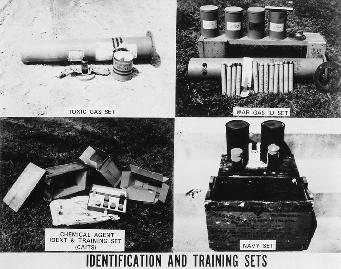


Mustard gas deals with several manufactured chemicals, including
Sulfur Mustard, that don't naturally occur in the environment.
--It is actually a liquid form that is colorless and odorless, but when mixed
with other chemicals it turns to a brownish
color and has a garlic smell to it
--It has been used in warfare as a chemical agent since World War I and II
Mustard gas can affect our health.
--If you come in contact with it, it causes skin burns and blisters, burns your
eyes, your eyelids swell
--If you breathe it, it causes coughing, bronchitis, and long-term respiratory
problems
--If exposed to a large amount of mustard gas, you can die
How does this Mustard gas work?
--Health effects due to exposure to this chemical agent depend on the amount you
are exposed to, the route of exposure,
and the length of time that you are exposed
--It damages DNA
--The vapors from Mustard gas are heavier than air so they stay in low-lying
areas
--Sulphur mustard is an alkylating agent. Alkylating
agents
bind covalently to various nucleophilic molecules such
as DNA,
RNA, proteins and components of cell membranes
(Somani
& Babu, 1989).
DNA:
Mustard gas causes cross linking of DNA strands.
Alkylation of DNA can result in the disruption of its
function, i.e. coding errors, breakage of the strand, low
fidelity repair, inhibition of replication and cell
death.
Immediate signs and symptoms:
|
|
|
|
--Mustard gas is a synthetic substance prepared by treating ethylene with
sulfur chloride (Levinstein process)
--so therefore it is much like a double
replacement chemical reaction
 |
 |
(pictures taken from 'Mustard Gas Cannisters' off of Yahoo pictures)
For more info on Mustard gas (sulfur mustard) you can contact the following :
- Regional poison control center (1-800-222-1222)
-
Centers for Disease Control and Prevention
phone: (1-888-246-2675)
e-mail: cdcresponse@ashastd.org
-
Agency for Toxic Substances and Disease Registry (1-888-422-8737)
Go to Center for Disease Control: Mustard Gas
Go to Home page